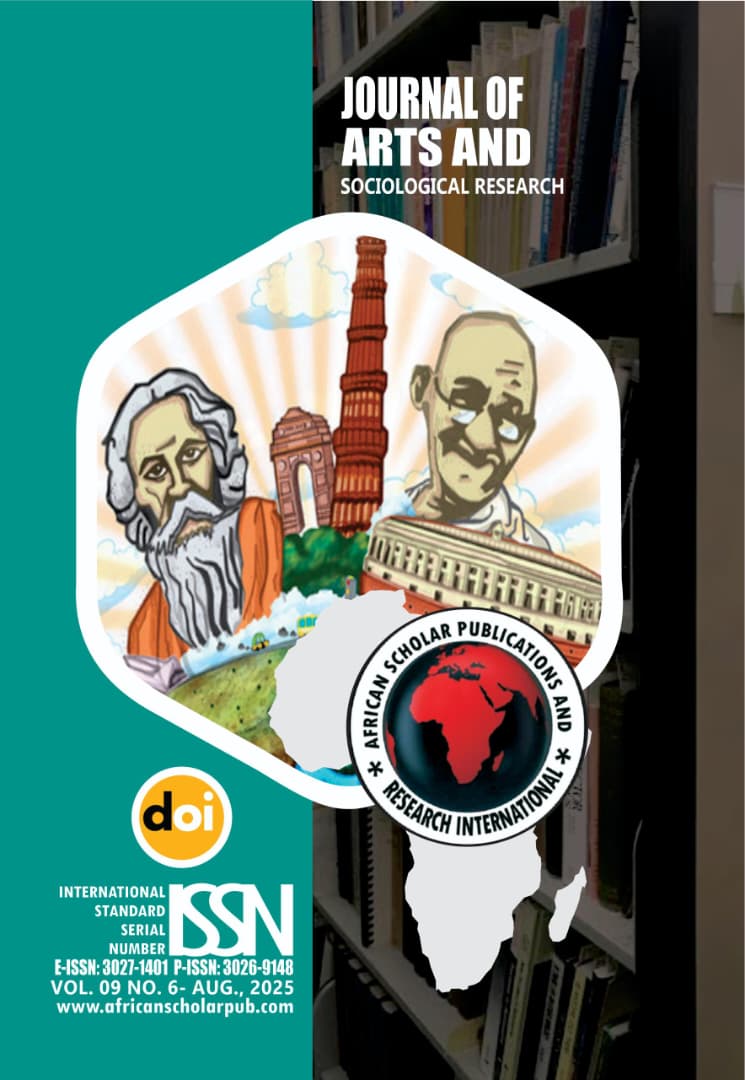Analysis of Set Design as Narrative Agent in Jerry Ossai's “Ms. Kanyin”
Abstract
This research investigates the pivotal role of set design as an instrumental storytelling tool in Jerry Ossai's film, "Ms. Kanyin." Moving beyond its conventional perception as merely a visual backdrop, this study contends that set design actively shapes and propels the narrative, influences character development, establishes the mood, and highlights thematic elements. Employing a qualitative case study approach, the methodology involves a detailed visual analysis of the film's distinct settings, semiotic interpretation of their symbolic meanings, and the application of narrative theory to understand their functional contributions. Key findings reveal a compelling juxtaposition between the historical, untamed jungle setting of 1892 and the structured, modern environment of Sterling Academy. The recurring motif of the cursed tree, seen across both timelines, acts as a key narrative element, linking past and present conflicts. The careful use of period-specific props improves authenticity and provides subtle storytelling cues. The study concludes that the intentional and contrasting set designs in "Ms. Kanyin" are purposeful, playing a vital role in conveying the film's complex themes, advancing its plot, and engaging viewers, ultimately emphasizing the importance of production design in storytelling within the Nollywood industry.
Keywords:
Set Design, Narrative Agent, Ms. Kanyin, Nollywood, Production Design, Symbolism, SemioticsDownloads
Downloads
ACCESSES
Published
Issue
Section
License
Copyright (c) 2025 Adebayo John Badeji (Author)

This work is licensed under a Creative Commons Attribution 4.0 International License.


















